1. Black Norwegian Elkhound
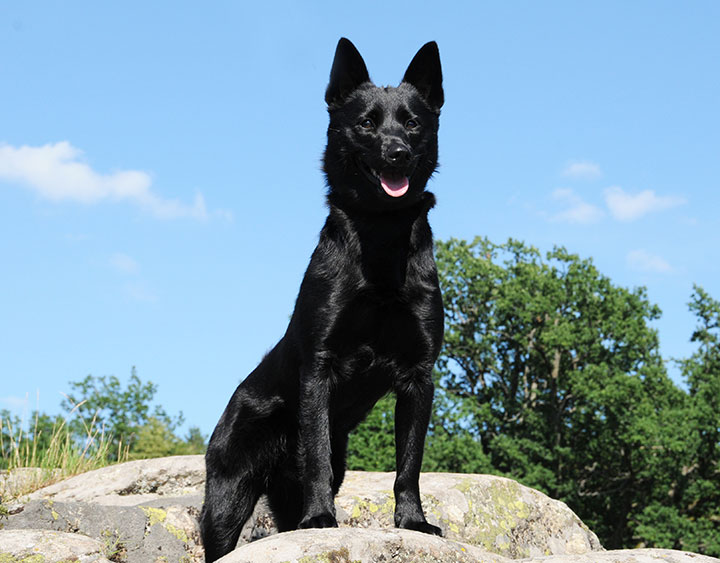
The Black Norwegian Elkhound (Norsk Elghund Svart) is a modern variant of the Grey Norwegian Elkhound. It is a small Spitz breed and is very rare outside the Nordic countries of Scandinavia. It is bred for the same purpose as the Grey Norwegian Elkhound but is smaller, more agile, and easier to recognise in the snow. Historically, it is a much “younger” breed, first bred in Norway during the early 19th century. It is classified as a hunting dog, although it is also used as a watchdog, guard dog and herder.
The Black Elkhound is used in all types of hunts but excels best in hunting large game such as elk, moose and bear. It is very good at tracking and makes an excellent watchdog. It is a good family dog but can sometimes be a bit contentious in relations with other dogs. The Elkhound has been an important dog for farmers in Scandinavia for hundreds of years. Read More…
2. Dunker
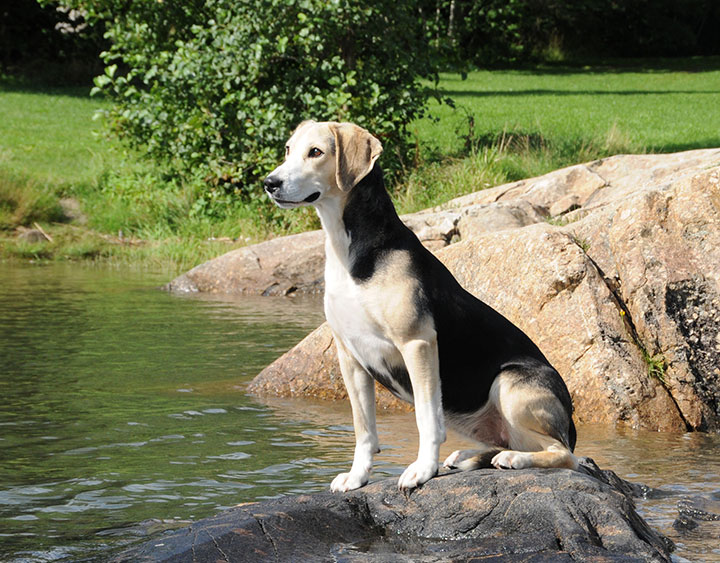
The Dunker has a clean, noble, long head with parallel planes of the skull and muzzle, carried low and not wedge-shaped. Its skull is slightly domed with a defined stop and clean cheeks, the muzzle is long and square-cut with a straight and broad nasal bridge, and its teeth are evenly spaced with a scissors bite. The Dunker has a black nose with wide nostrils, round, large, and dark eyes, and low-set, wide, flat, ears that hang close to the head and to the middle of the muzzle.
The Dunker has a long neck with no throatiness, sloping shoulders, straight forelegs, a level topline, a straight and strong back with broad and muscular loins, and a slight tuck up in the chest. Its hindquarters are well-angulated, as are its stifle, and its thighs and hocks are broad. The feet are arched, well-knit, have firm pads and hair between the toes, and point straight ahead. The tail is set on level with the topline, strong at the root, tapering at the end, straight, carried in a slight upward curve, and reaches to the hock.
The Dunker’s coat is straight, hard, dense, and not too short, with the most desirable colours being black or blue marbled with pale fawn and white markings. Less desirable are warm brown or predominant black reaching from the muzzle and beyond the hock joint, a black mask, and overmarked white, and more than fifty per cent white colour is a disqualification.
3. Eurohound
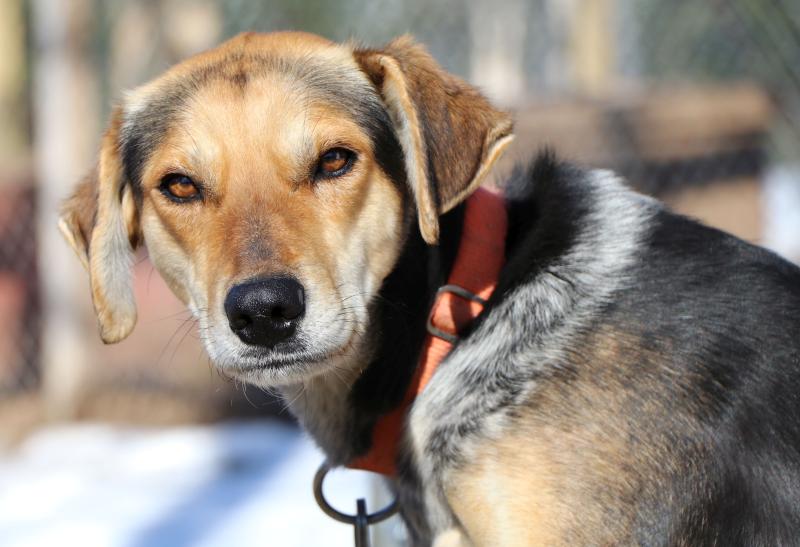
A Eurohound (also known as a Euro dog or Scandinavian hound) is a type of dog bred for sledge dog racing. The Eurohound is typically crossbred from the Alaskan husky group and any of a number of pointing breeds.
4. Halden Hound
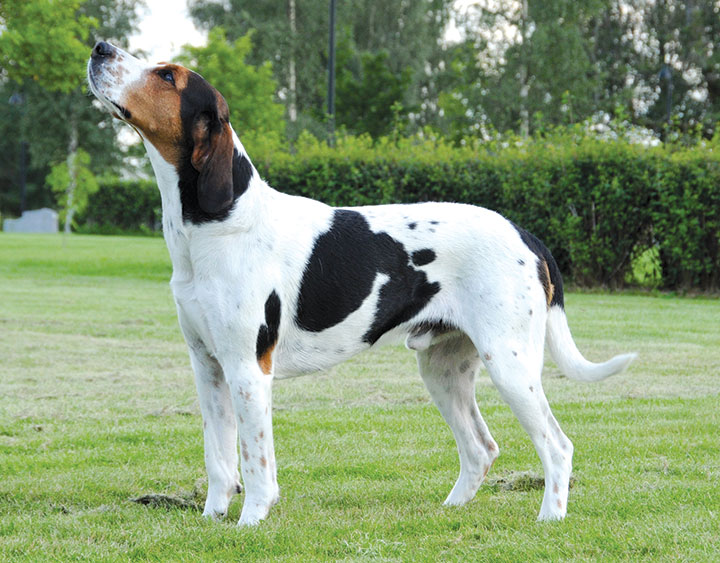
The Halden Hound is a medium-sized Norwegian dog breed of the hound class, used for hunting hares and other plains quarry. It resembles an American Foxhound but is smaller. It was named after Halden, a town in southeastern Norway.
5. Hygen Hound
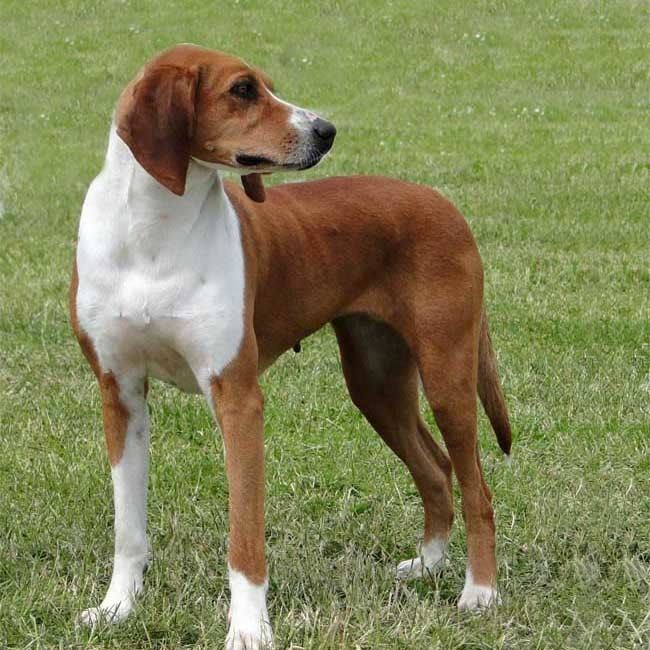
A Hygen Hound (Hygenhund) is a Norwegian breed of dog from the hound group, created in the 19th century by Norwegian breeder Hygen from various other hound breeds. The Hygen Hound is an endurance hunter who can traverse Arctic terrain for long periods without fatigue.
The Hygen Hound stands approximately 19 to 24 inches (48 to 61 cm) high and weighs around 44 to 55 pounds (20 to 25 kg). They have a thick, shiny coat with straight hairs. They can be found in yellow and red, chestnut (with or without black shading) and black with bright chestnut colours, sometimes combined with white markings.
Their heads are triangular, with a broad skull and dark eyes. The ears are wide, the muzzle medium-sized and the neck long and clean. They have level toplines and a solid, compact body. The legs are solid and muscular and the feet compact, and they move in a well-balanced, reaching motion. The tail is carried high, but not curled over the back. Their temperaments are energetic and free-spirited.
6. Norwegian Buhund
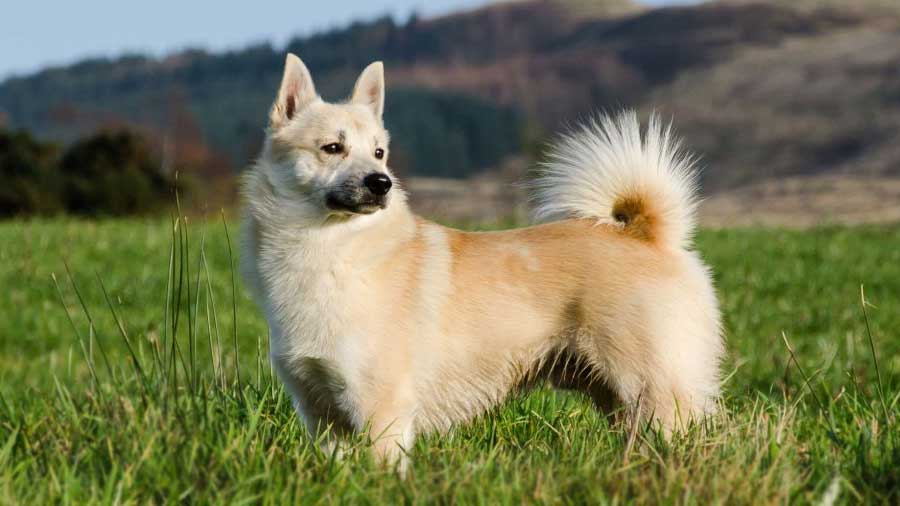
The Norwegian Buhund is a breed of dog of the spitz type. It is closely related to the Icelandic Sheepdog and the Jämthund. The Buhund is used as an all-purpose farm and herding dog, as well as a watchdog and a nanny dog. Read More…
7. Norwegian Elkhound
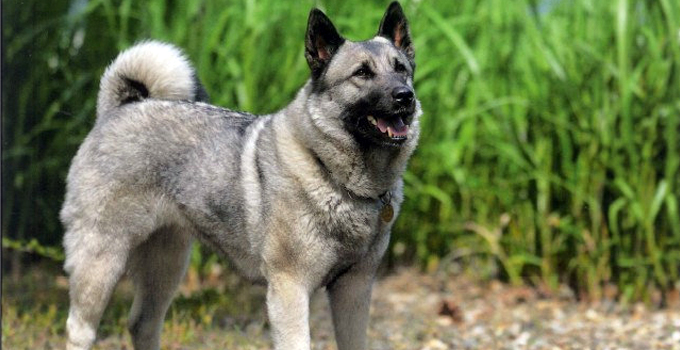
The Norwegian Elkhound is one of the Northern Spitz-type breeds of dog and is the National Dog of Norway. The Elkhound has served as a hunter, guardian, herder, and defender. It is known for its courage in tracking and hunting moose (or elk) and other large game, such as bears or wolves. The Norwegian Elkhound was first presented at a dog exhibition in Norway in 1877.
The dog will only bark while the moose is stationary, but it can also slowly drive the moose towards shooters lying in wait. The Norwegian Elkhound is also used on a leash. In this mode of hunting, the dog leads the hunter in the direction of the moose while keeping quiet.
In Medieval times, it was known as a dyrehund, meaning “animal-dog” in Norwegian, and was highly prized as a hunting dog, but rarely seen or bred outside of Norway, until its appearance in England in the 19th century. It was officially recognized by The Kennel Club in 1901.
8. Norwegian Lundehund
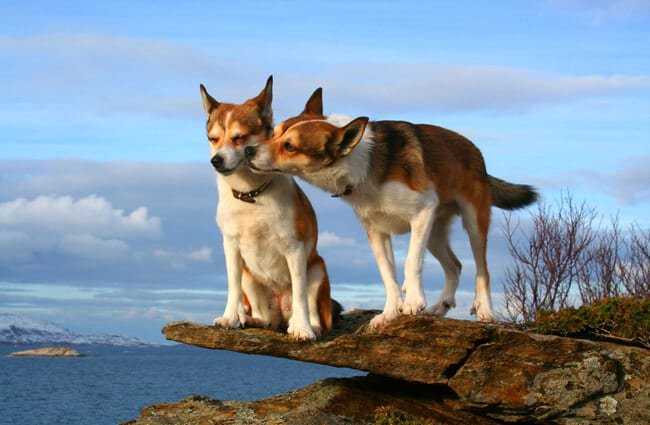
The Norwegian Lundehund (Norsk Lundehund) is a small dog breed of the Spitz type that originates from Norway. The breed was originally developed for the hunting of puffins and their eggs.
The Norwegian Lundehund is a small, rectangular Spitz-type dog. The Lundehund has a great range of motion in its joints, allowing it to fit into and extricate itself from narrow passages. Dogs of this breed are able to bend their head backwards along their own spine and turn their forelegs to the side at a 90-degree horizontal angle to their body, much like human arms. Their pricked, upright ears can be folded shut to form a near-tight seal by folding forward or backwards.
The Norwegian Lundehund normally has six toes instead of the normal four toes, all fully formed, jointed and muscled. Some specimens may on occasion have more or fewer than six toes per foot, but this is then outside the breed standard.
The outercoat is dense and rough with a soft undercoat. The Lundehund is adapted to climb narrow cliff paths where it originally would have hunted puffins.
The Lundehund was a valuable working animal, essential in hunting puffin birds along the Norwegian coast for food as well as the commercial export of puffin down from the Viking Age through the 16th and 17th centuries. Its flexibility and extra toes were ideal for hunting the birds in their inaccessible nesting locations on cliffs and in caves. Interest for the breed declined when new methods for hunting puffins were incorporated and a dog tax was created. Read More…